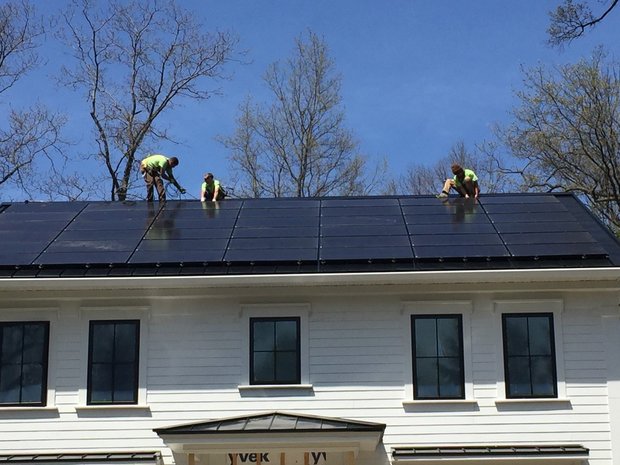While Ohio’s legislature has tried to further weaken the state’s renewable energy standards, lawmakers from two other states – Maryland and Michigan – have beefed up their state’s standards.
Maryland is the latest state to do so. Its general assembly passed a law last year that required 22 percent of the electricity sold in the state to be produced by renewable sources by 2020. The old standard had been 20 percent by 2022.
Maryland Gov. Larry Hogan, a Republican, vetoed the bill, but the lawmakers overrode the veto last week.
The legislation was heralded by clean power advocates.
The Sierra Club reported that the Maryland Climate Coalition projects the higher standard will prompt the installation of 250 megawatts of solar energy in the state and over 1,000 megawatts of additional renewable energy in the region.
Michigan promotes greater reliance on renewables
In December, Michigan, voted to increase its renewable energy standard to 15 percent from 10 percent by 2021.
The legislation also set a voluntary goal of satisfying 35 percent of the state’s electricity demand through a combination of renewable sources, energy efficiency and demand reduction.
Boosting renewable energy standards has been a trend
Below are the states (and Washington, D.C.) that increased their renewable energy standards in the past two years. Click here for a complete list of the renewable energy standards that are in place in 29 states and Washington, D.C.
- Washington, D.C., boosted its mandate to 50 percent by 2032.
- New York raised its mandate to 50 percent by 2030.
- Rhode Island raised its requirement to 14.5 percent by 2019 and to 38.5 by 2035.
- Vermont went from a goal to a mandate that includes 55 percent by 2017 and 75 percent by 2032.
- Oregon amended its standard to 25 percent by 2025 and 50 percent by 2040.
- California went to 33 percent by 2020, 40 percent by 2024, 45 percent by 2027 and 50 percent by 2030.
- Hawaii boosted its standard to 30 percent by 2020, 40 percent by 2030, 70 percent by 2040 and 100 percent by 2025.
Will Ohio go backward?
Ohio’s standard requires 12.5 percent renewables by 2027, but Republicans in the Ohio legislature want to weaken the requirement, if not get rid of it altogether.
But Ohio Gov. John Kasich, also a Republican, sees value in renewables and doesn’t want the standards gutted.
After the Republican-controlled legislature voted last year to essentially continue a freeze on the standards for an additional two years, Kasich vetoed the bill.
In doing, Kasich credited Ohio’s “wide range of energy generation options” with helping to grow jobs in the state over the past six years.
The bill “risks undermining this progress by taking away some of those energy generation options, particularly the very options most prized by the companies poised to create many jobs in Ohio in the coming years, such as high technology firms,” Kasich stated in a press release.
It’s possible that a revamped renewables standard will be part of a more comprehensive energy policy adopted by the legislature this year.
Source: Cleveland.com
Women of Green is TURNING UP THE VOLUME of the feminine voice on the planet in order to create the world we know is possible.
